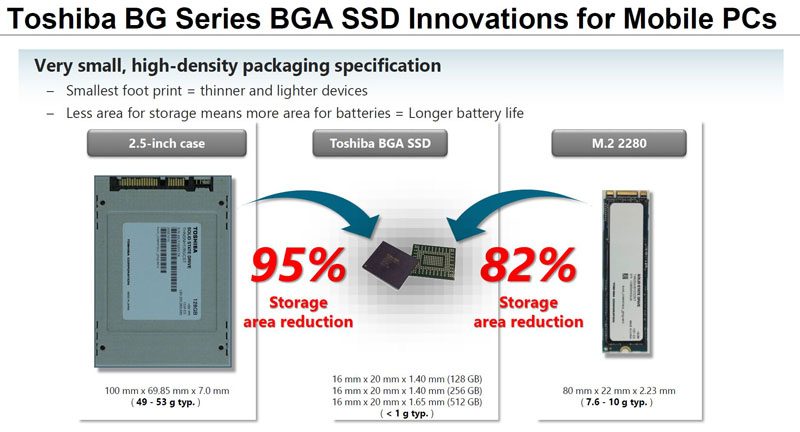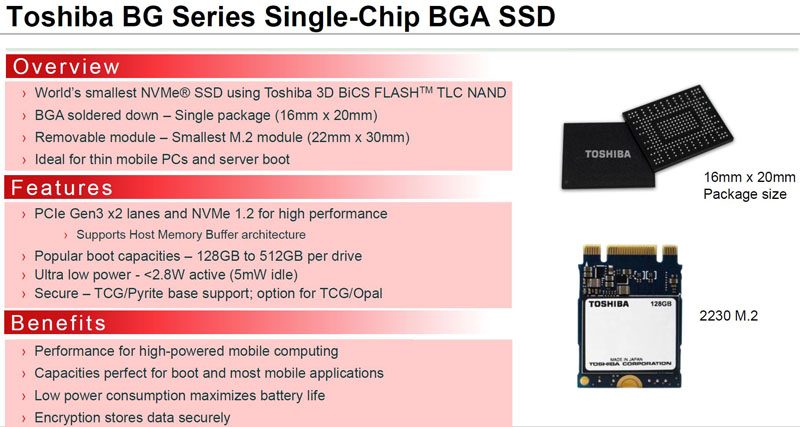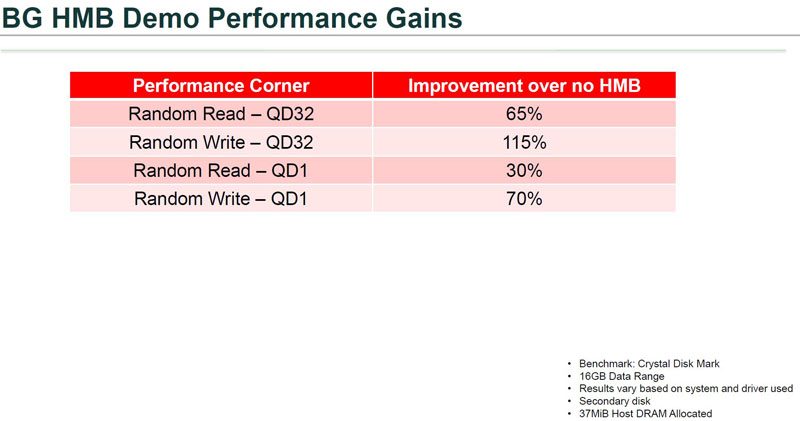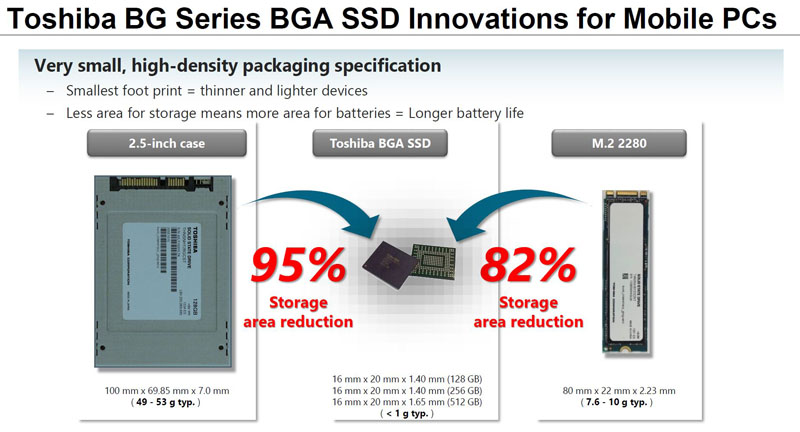Toshiba SSDs have performed well for STH’s infrastructure. While we use Toshiba’s data center products, Toshiba is also attacking the mobile market. We have seen 2.5″ disks and m.2 form factors become popular in both the client and data center environments and now Toshiba is moving NVMe SSDs to a BGA form factor with its BG series.
Toshiba BG Series
The Toshiba BG series is meant to deliver 95% lower footprints for storage than 2.5″ SATA SSDs. It comes as a BGA package but also in two flavors: a single package solution and a m.2 2230 module. Both modules utilize Toshiba’s BiCS TLC NAND and come in 128GB, 256GB and 512GB capacities.

One of the major features of the BG series is support for Host Memory Buffer as defined in the NVMe 1.2 specification. HMB allows the SSD to manage a small amount of system DRAM to help improve random read performance, without using on-SSD DRAM.

Toshiba claims significant speed-ups of the BG series utilizing HMB over turning HMB off. While HMB may improve read performance, it is still not going to be as fast as traditional on-device DRAM. On the other hand, it does provide lower power and lower cost characteristics.

We had the opportunity to speak to Toshiba about the BG series earlier this week. One areas we added may be of particular interest to STH readers is for embedded applications. A more reliable embedded option than USB thumb drives may be welcome and we have seen a few next-generation server designs incorporate boot disk storage. For client applications, the small form factor and lower power characteristics mean smaller, thinner devices with longer battery life.




